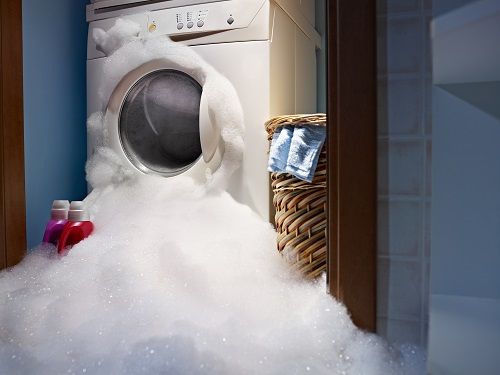Water damage is a nightmare for any home or property owner.
Whether caused by burst or backed up pipes, flooding, leaky plumbing or a
faulty appliance, water can cause major problems for flooring, walls and
furniture. Cleaning up after a water leak or flood is often messy and
laborious, not to mention time consuming and costly.
The two cardinal rules of cleaning up after a water-based
incident are to get rid of the water as quickly as possible, and then to dry
out the affected area thoroughly. The longer you leave standing water in your
home or property, the more damage it will do. A common mistake then is, once
the visible water has all been removed, to assume it is dry enough to do the
repair work.
Unless floors, walls etc are completely dried out, you risk
locking in damp by laying new surfaces over the top, creating even bigger
problems further down the line.
So how do you go about drying a floor properly after a water
leak?
Clear, Air, Replace
The first stage is to remove as much excess water as possible,
whether that is by pumping, mopping, draining or any other approach. Getting
the bulk of the standing water out is important both to minimise damage and
speed up the drying process. If there are still puddles of water lying about,
it will take much longer to get your floor properly dry and you risk more
extensive damage being caused.

Second, get as much air circulating around the affected
spaces as possible. Leaving windows open will help to remove moisture from the
air in a room, which will then make the natural drying process more efficient.
This can be sped up using fans and/or dehumidifiers. However, in the case of
the worst flooding, you should make sure the electricity is certified safe
before plugging any appliances in, or else use an external power supply.
Once you are set up to increase the airflow around the
affected spaces, it is time to tackle the flooring itself. Unless the leak is
relatively minor and you are confident of being able to dry out the flooring
material quickly , the likelihood is that you will have to pull up carpets,
wooden floors and even linoleum or vinyl.
There are two reasons for this. One, if a significant amount
of water has soaked into your flooring material, it is probably easier (and
faster) to replace it than to wait for it to dry. But just as importantly, you
need to expose the subfloor to let that dry properly, otherwise you risk long
term issues with damp and mould. The only exception to this is stone or tiled
floors, where the surface material itself acts as a hard barrier.
Of course, none of this clean-up and drying-out process
comes cheap and easy, especially once you have to start replacing flooring
materials. Don’t take a risk on a big financial hit - Row.co.uk’s Home Emergency insurance cover protects you for flood and water leak
damage, giving you valuable peace of mind when dealing with a tricky situation.
*The information in this blog is designed to provide helpful information on the subjects discussed. Please seek a professional for expert advice as we can not be held responsible for any damages or negative consequences upon following this information.